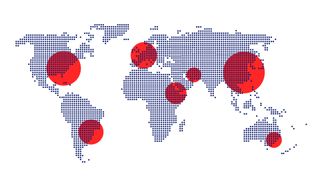Explore Security
Security
Latest about Security

NCSC appoints new CEO
By Emma Woollacott published
News Richard Horne will join the organisation from PwC, where he currently chairs the company's cyber security practice

Cyber attack takes Frontier Communications systems offline, affecting millions of broadband customers
By Solomon Klappholz published
News The telecoms firm has been forced to take down a number of its IT systems after an unauthorized third party gained access to its internal network

Cisco launches Hypershield – a 'must-have solution' for those defending against IoT-based cyber attacks
By Solomon Klappholz published
Hypershield leverages its recent acquisition of Isovalent to provide a highly-distributed security architecture that brings security wherever you may need it

After a string of high profile cyber gang takedowns, is the cyber crime industry about to get a lot more fragmented?
By Solomon Klappholz published
The Met’s takedown of online fraud service LabHost shows the heat is being turned up on larger threat collectives, but will the cybercrime ecosystem adjust accordingly?

UnitedHealth reveals eye-watering cost of Change Healthcare cyber attack
By Steve Ranger published
News The parent company said it is still recovering from the incident in February, considered one of the most significant and consequential cyber attacks against the US health system to date

DDoS attacks are still growing and there are new threats on the horizon
By Steve Ranger published
Security Scale of DDoS is increasing – this is how the attacks are evolving

Fears over copycat XZ-style attacks mount as open source devs targeted with suspicious emails
By Steve Ranger published
News A mysterious attempt to plant a backdoor in a widely used open source project was likely not an isolated incident

Bad bots are on the rise as almost half of all internet traffic is now automated
By Solomon Klappholz published
Web traffic is becoming dominated by automated bots, as the volume of malicious bot traffic is rising for the fifth consecutive year, but which industries are most at risk?
Get the ITPro. daily newsletter
Receive our latest news, industry updates, featured resources and more. Sign up today to receive our FREE report on AI cyber crime & security - newly updated for 2024.





